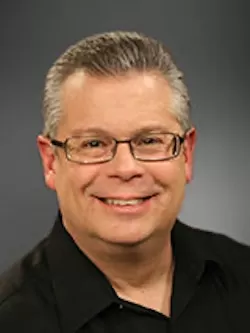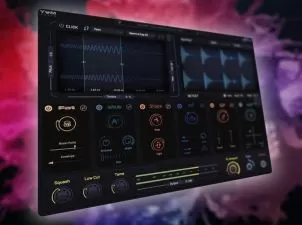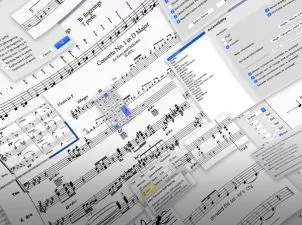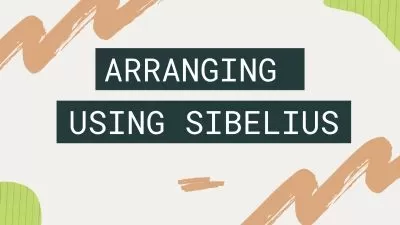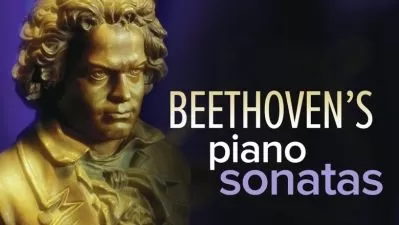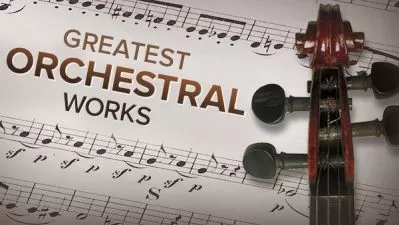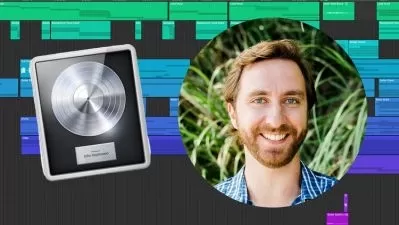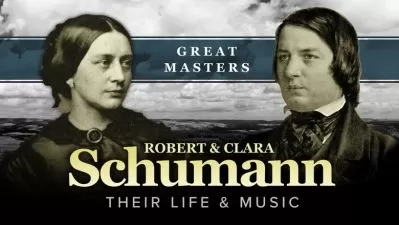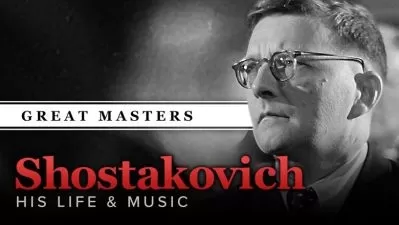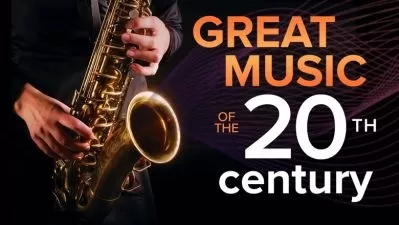Bach and the High Baroque
Robert Greenberg
24:50:50
Description
Underappreciated in his own time, Johann Sebastian Bach has ascended to Olympian heights in the estimation of generations of music lovers. But what is it about his music that makes it great? Composer and musicologist Robert Greenberg helps you hear the extraordinary sweep of Bach's music and understand his compositional language—whether you're a devoted admirer or a casual listener.
How Did Bach Become Bach?
Professor Greenberg sets Bach in context by tracing the musical traditions and composers from whom he drew his inspiration, and explaining how Bach absorbed these influences to become the transcendent composer of the High Baroque. According to Professor Greenberg, no other composer is more representative of the period and its aesthetic of emotional extravagance and technical control.
You will also learn how Bach's background—at least 42 of his relatives were professionally involved with music—and his strong German Lutheran heritage shaped his development as an artist.
A Musical Feast
But above all, you will hear music—lots of it. Professor Greenberg devotes extensive discussions to the following Bach pieces, from which he plays major excerpts:
- Brandenburg Concerto no. 2
- Cantata no. 140, "Wachet auf, uns ruft die Stimme"
- Coffee Cantata
- Fugue in C-sharp Major from The Well Tempered Clavier, Book I
- Goldberg Variations
- Partita no. 5 in G Major for Harpsichord
- St. Matthew Passion
- Toccata and Fugue in D Minor
- Violin Concerto in E Major.
You'll hear selections from other Bach works, such as Orchestral Suite in D ("Air on the G String"), B Minor Mass ("Hosanna" from the Sanctus), and Concerto in D Major for Harpsichord.
In addition, you'll be able to compare Bach with musical examples from Bizet, Chopin, Corelli, Couperin, Handel, Haydn, Lully, Palestrina, Pergolesi, Purcell, Rossini, Tchaikovsky, Vivaldi, and other composers both before and after his time.
What Makes Bach Bach?
The music of Bach, especially when compared to what came before, is extravagant and unbridled. Yet every aspect of it—beat, melody, melodic repetition, interaction, and harmony—is also magnificently controlled. His output is encyclopedic, encompassing every form then current in Western music. With Professor Greenberg's instruction, you will understand precisely how Bach's genius raises these forms to their pinnacle, achieving an unprecedented fullness of artistic realization within each of them, and why Bach's death in 1750 also marks the end of the Baroque period.
What You'll Learn
Part I gives an overview of Bach's life and the stylistic trends present in the music of the High Baroque.
- Lecture 1 lays out the goals of the course and also introduces the truly extraordinary sweep of Bach's music, in terms of compositional genres and expressive content.
- Lecture 2 introduces Bach the man at a critical juncture in his life, Christmas 1722.
- Lectures 3 and 4 provide an introduction to the Baroque aesthetic and that most quintessential Baroque musical procedure, fugue.
- Lecture 5 provides a historical overview of both the Baroque era and the years leading up to it.
- Lectures 6–8 offer a musical glossary of the style features of High Baroque music.
Part II explores the diverse world of Baroque Europe with an ear for those elements—musical and nonmusical—that together constitute Bach's inheritance. Among the influences in Bach's life, the Lutheran Church must be considered the most important and profound.
- Lecture 9 deals with the tremendous social upheavals and wars of religion that were the Protestant Reformation.
- Lecture 10 examines Lutheranism and the new Lutheran liturgy, with particular attention paid to the role of music, especially the Lutheran Church chorale and its role in the Lutheran liturgy. Second only to the influence of Lutheranism on Bach was the Italian musical style, the pre-eminent musical style of the High Baroque. Based in equal measure on the Italian language, vocality, and the dramatic practices of opera, the Italian style powerfully shaped Bach's approach to melody, genre, and musical form.
- Lectures 11 and 12 explore the development of the Italian style from the Renaissance through the Baroque, and how Bach joins the melodic fluidity and drama of Italian style with the spiritual power and profundity of German Lutheranism in the Toccata and Fugue in D Minor.
- Lectures 13–16 examine the concerto, the most important orchestral genre of the High Baroque, with special attention paid to the life, times, and concerti of Antonio Vivaldi; Vivaldi's influence on Bach; Baroque concerto types; and Bach's intensification and expansion of the Italian concerto models in his own concerti.
Part III continues with an in-depth examination of the influence on Bach of the French style and Italian opera.
- Lectures 17 and 18 focus on the preeminence of dance and opera in French Baroque music and the birth and development of the French overture and the orchestral suite.
- Lectures 19 and 20 continue to focus on music born of the French Baroque, examining first the keyboard suite in France and then in Germany.
- Lectures 21–22 discuss the Lutheran Church Cantata No. 140, Wachet Auf ("Sleepers, Wake!"), as a Lutheran religious composition permeated with the compositional techniques and human drama of secular opera.
- Lectures 23–24 deal with Bach's Coffee Cantata. These lectures introduce and discuss the work as a forward-looking comic opera (opera buffa), firmly within the same Italian comic operatic tradition as the Italian-language operas of Pergolesi, Mozart, and Rossini.
Part IV features two of Bach's greatest masterpieces: the St. Matthew Passion and the Goldberg Variations. No works by Bach are more transcendent.
- Lectures 25–28 examine the St. Matthew Passion, a massive and deeply moving work that has no model, no precedent, and no equal in the Baroque era. Matthew's dark and very human telling of the trials and crucifixion of Jesus is brilliantly realized by Bach in a work set for two full choruses, two full orchestras, and two sets of vocal soloists. It is a work at once magnificent and intimate, despairing and filled with faith.
- Lectures 29–32 deal with the Goldberg Variations, probably the most singularly unified, most spiritually esoteric work created during the Baroque. In this intimate keyboard work, consisting of a theme, 30 variations, and a reprise of the theme, worlds of numerical, religious, and metaphysical symbolism have been found. The Goldberg Variations is a work of almost unbelievable substance, a whole infinitely greater than its 32 constituent parts.
More details
User Reviews
Rating
Robert Greenberg
Instructor's CoursesDr. Robert Greenberg is Music Historian-in-Residence with San Francisco Performances. A graduate of Princeton University, Professor Greenberg holds a Ph.D. in Music Composition from the University of California, Berkeley. He has seen his compositions—which include more than 45 works for a wide variety of instrumental and vocal ensembles—performed all over the world, including New York, San Francisco, Chicago, Los Angeles, England, Ireland, Greece, Italy, and the Netherlands.
He has served on the faculties of the University of California, Berkeley; California State University, Hayward; and the San Francisco Conservatory of Music, and has lectured for some of the most prestigious musical and arts organizations in the United States, including the San Francisco Symphony, the Lincoln Center for the Performing Arts, the Van Cliburn Foundation, and the Chicago Symphony. For The Great Courses, he has recorded more than 500 lectures on a range of composers and classical music genres.
Professor Greenberg is a Steinway Artist. His many other honors include three Nicola de Lorenzo Composition Prizes and a Koussevitzky commission from the Library of Congress. He has been profiled in various major publications, including The Wall Street Journal; Inc. magazine; and the London Times.
You can find more music content from Robert Greenberg on Patreon: https://www.patreon.com/RobertGreenbergMusic.
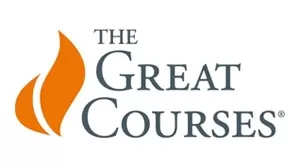
The Great Courses
View courses The Great Courses- language english
- Training sessions 33
- duration 24:50:50
- English subtitles has
- Release Date 2023/05/09





